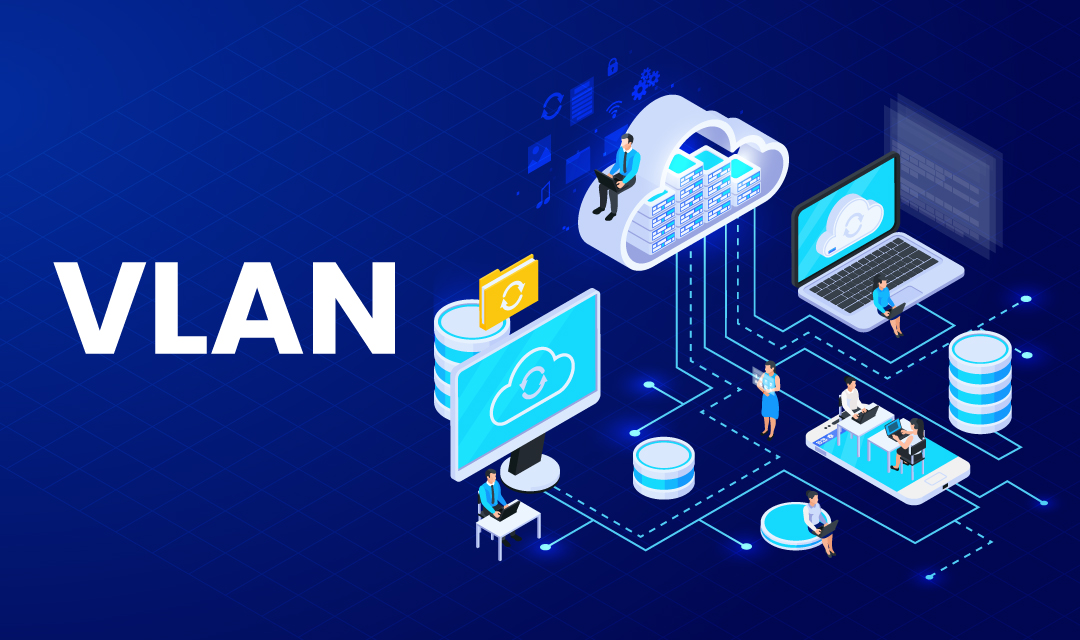
A VLAN is a logical partition of a physical LAN into virtual segments. By dividing a physical LAN into virtual networks, network administrators can group devices together according to their traffic characteristics. Not all devices in the same LAN need to communicate with each other and by segmenting a physical network into logical groups, resources available within a VLAN can only be shared amongst devices contained within.
A VLAN is a local area network whether the nodes are physically connected to each other, or separated by distance away. By grouping devices into a VLAN, it is easier to access control shared resources and applications as well as managing bandwidth more efficiently. Creating VLANs allows easier grouping and modification of existing networks without running new cables.
VLANs work identical to physical LANs except they are virtually partitioned as opposed to physically wired. A data packet from one VLAN to another VLAN must go through a router just like the physical LAN does. You can define LANs and VLANs as broadcast domains as described below.
What is a broadcast domain?
A broadcast domain is a logical network where all nodes in the network can reach each other at the data link layer. The devices are connected through layer 2 devices such as switches, repeaters, and bridges. A broadcast message sent by any node in the network can be heard by its peers sitting in the same broadcast domain.
What is a collision domain?
A collision domain is a segment of a network where two nodes transmitting data simultaneously will cause a collision. The collision domain shares the same medium without any switching functionality, and therefore all nodes are connected on the same bus (or hub). Collision domains most like occur in wireless networks, but earlier versions of 10Mbps Ethernet were connected in this manner. When a collision occurs, nodes that are sending data packets wait a random amount of time and retransmit data over again until no collision is detected.
What are the benefits of using VLAN?
With the prosperity of wireless networks, organizations not only employ physical ethernet but also deploy wireless technology to create a hybrid network. The amount of data moving within the network has grown significantly over time and physically dividing networks to meet ever-changing demands has limitations.
- The primary benefit of using a VLAN is the ability to easily segment a physical network into multiple logical networks based on traffic characteristics.
- VLANs not only segment networks but also allow network administrators to easily add or remove nodes and application resources.
- By segmenting the network into smaller and logical partitions, the bandwidth can be better utilized and improve performance while reducing latency.
- VLAN also enhances network security by removing nodes that do not require access to the resources contained within the network.
Conclusion
A VLAN is a logical partition of physical networks, and creates a isolated virtual LAN that improve network efficiency. Being able to add or remove nodes without running phisical cables, enhancing network security, and increase network performance are among a few benefits of deploying VLANs
Share this post
Leave a comment
All comments are moderated. Spammy and bot submitted comments are deleted. Please submit the comments that are helpful to others, and we'll approve your comments. A comment that includes outbound link will only be approved if the content is relevant to the topic, and has some value to our readers.

Comments (0)
No comment